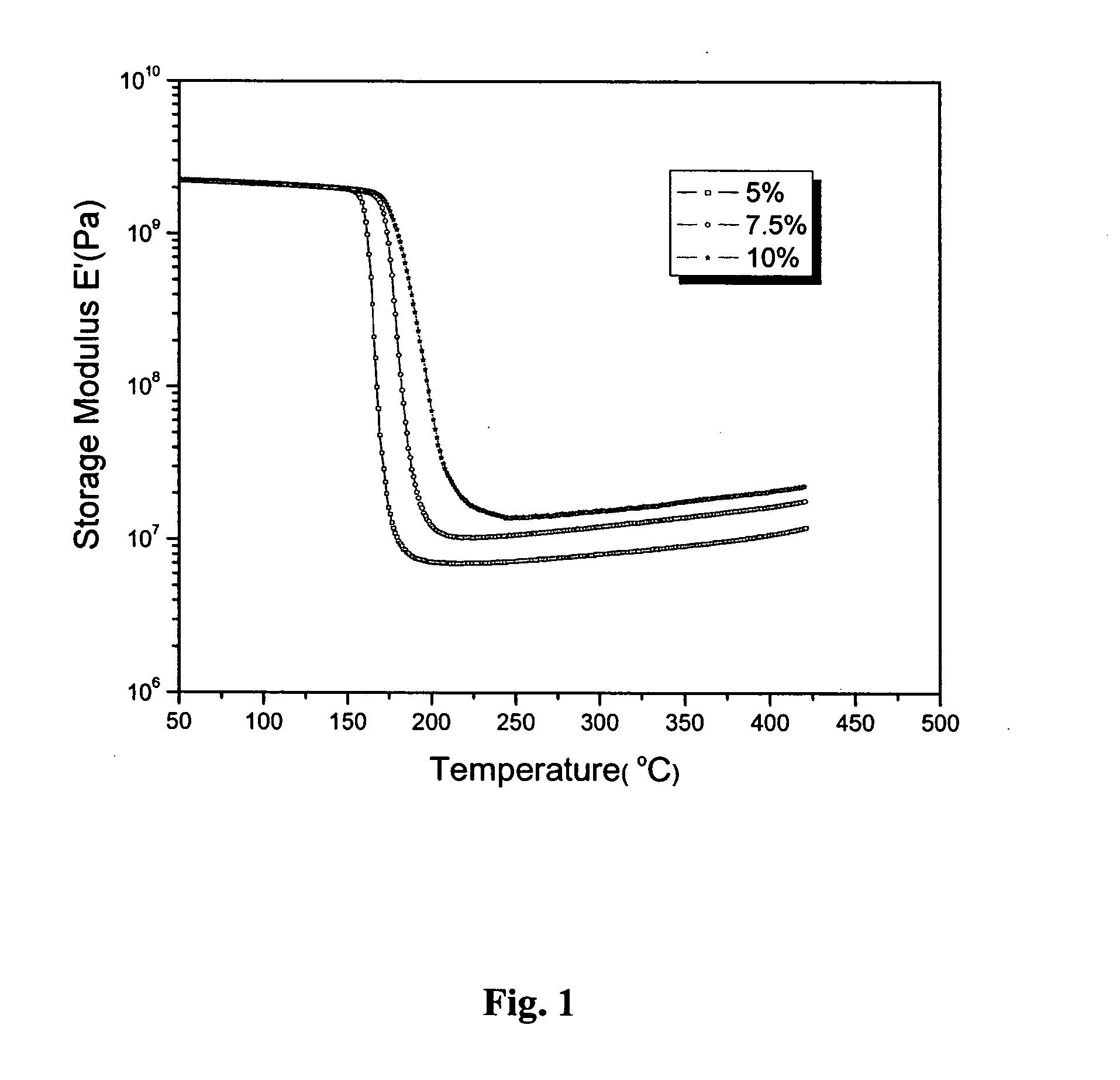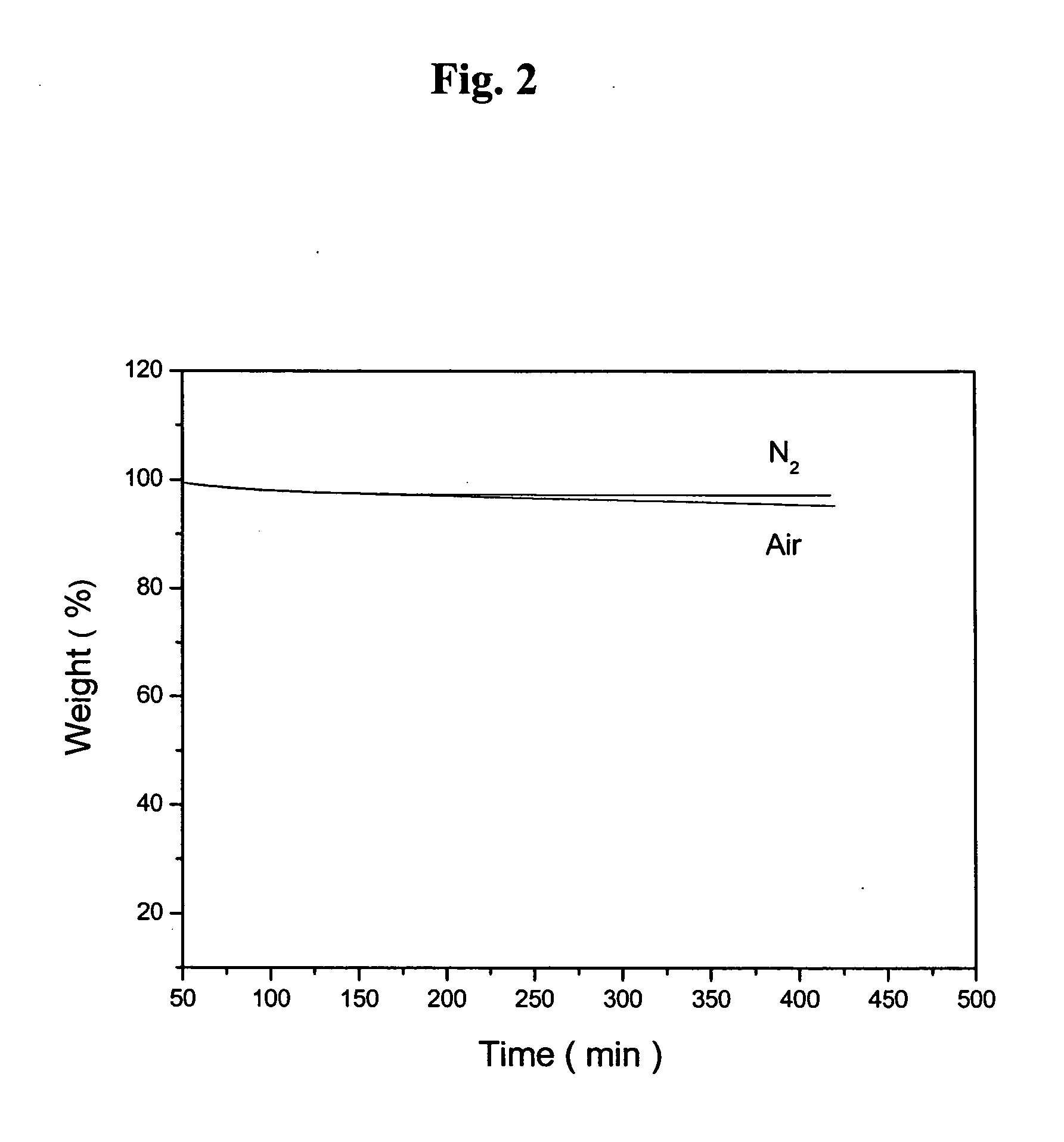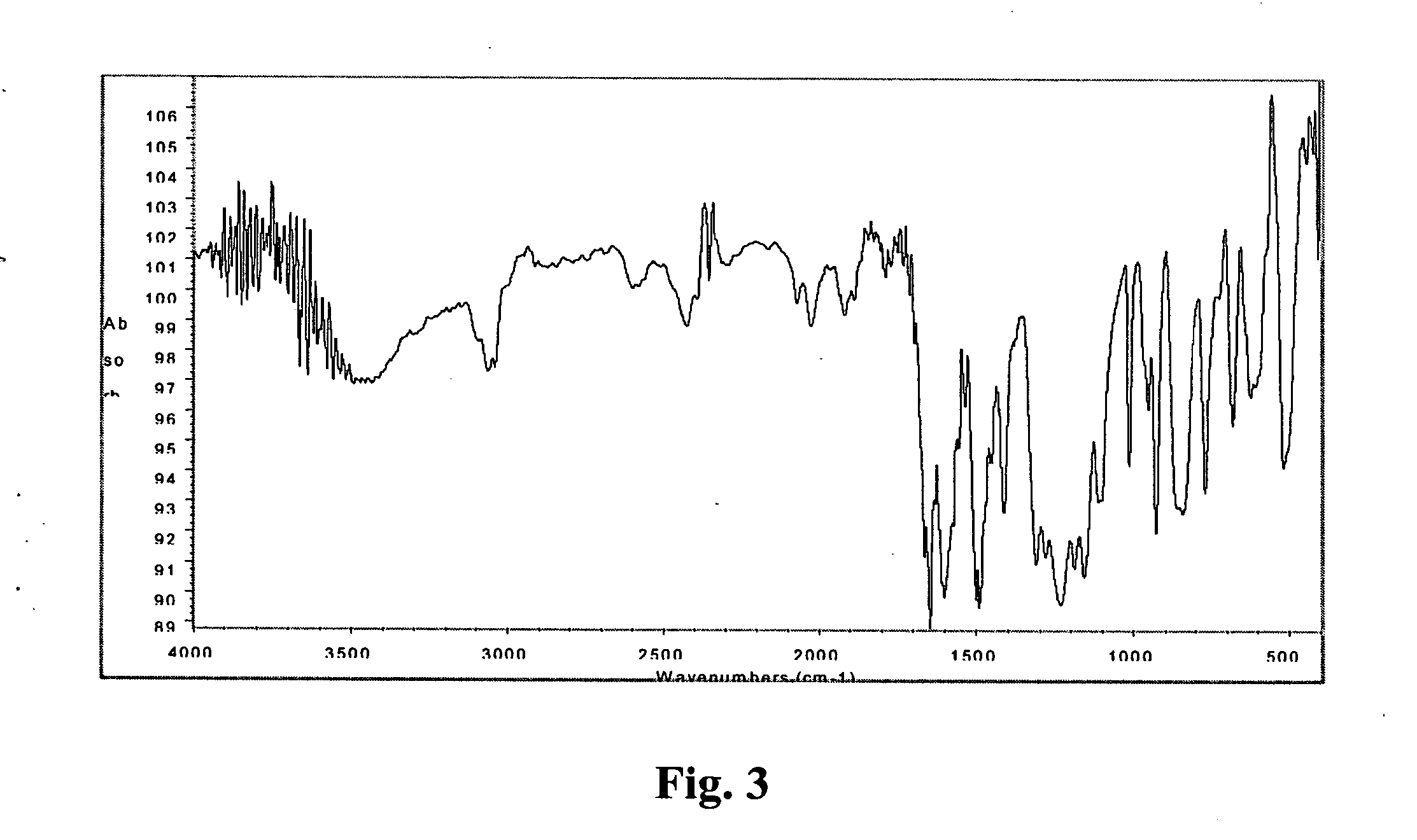Novel controlled crosslinked polyaryletherketone material with improved properties and a process for producing the same
a technology of crosslinking polyaryletherketone and controllable crosslinking, which is applied in the field of polymer materials, can solve the problems of limiting the application range, increasing tg and tm, so as to improve material performance, increase application temperature, and process excellent
- Summary
- Abstract
- Description
- Claims
- Application Information
AI Technical Summary
Benefits of technology
Problems solved by technology
Method used
Image
Examples
example 1
Into a 1,000 ml three-necked bottle equipped with mechanical stirrer, thermometer, 4,4′-difluorobenzo phenone (42.549 g, 0.195 mol), paradioxybenzene (22.000 g, 0.200 mol) and diphenyl sulfone (200.000 g, 0.960 mol) were added under N2. After heat-melting, anhydrous K2CO3 (1.421 g, 0.0103 mol) and anhydrous Na2CO3 (20.140 g, 0.190 mol) were added. The system was reacted with stirring at 160° C. for 1 h, and further reacted for 1 h at the elevated temperatures controlled respectively at 220° C., 250° C., and 290° C. Then the monomer compound FKOSOKF (3.061 g, 0.005 mol) was added. The system was reacted continuously at 310° C. for 1-3 h. The reaction product was discharged from cold water. The powdered crude product was washed 6 times with boiling acetone and boiling distilled water respectively to remove the organic solvent and inorganic salt. The final product was dried at 120° C. for 12 h, and a white powdered block copolymer sample was obtained (mol percent of FKOSOKF on the bas...
example 2
Example 2 was carried out as the same manner as that of example 1, except that the mol percent of FKOSOKF was changed successively to 5%, 10%, 15%, 20%, 25% and 30%. After treating as in example 1, the white powdered block copolymer samples were obtained (mol percent of FKOSOKF 5%, 10%, 15%, 20%, 25% and 30%, yield 96%-98%).
example 3
Into a 1,000 ml three-necked bottle equipped with mechanical stirrer and thermometer, 4,4′-difluoro benzophenone (42.549 g, 0.195 mol), biphenyldiphenol (37.200 g, 0.200 mol) and diphenyl sulfone (220.000 g, 1.068 mol) were added under N2. The system was reacted with stirring at 180° C. for 1 h, and further reacted for 1 h at each of the elevated temperatures controlled respectively at 220° C., 250° C. and 290° C. Then the monomer FKOSOKF (3.061 g, 0.005 mol) was added. The system was further reacted at 320° C. for 3 h. The reaction product was discharged from cold water. The powdered crude product was washed 6 times respectively with boiling acetone and boiling distilled water to remove the organic solvent and inorganic salt. The final product was dried at 120° C. for 12 h, a white powdered block copolymer sample was obtained (mol percent of FKOSOKF 2.5%, yield 98%).
PUM
| Property | Measurement | Unit |
|---|---|---|
| temperatures | aaaaa | aaaaa |
| temperatures | aaaaa | aaaaa |
| temperatures | aaaaa | aaaaa |
Abstract
Description
Claims
Application Information
 Login to View More
Login to View More - R&D
- Intellectual Property
- Life Sciences
- Materials
- Tech Scout
- Unparalleled Data Quality
- Higher Quality Content
- 60% Fewer Hallucinations
Browse by: Latest US Patents, China's latest patents, Technical Efficacy Thesaurus, Application Domain, Technology Topic, Popular Technical Reports.
© 2025 PatSnap. All rights reserved.Legal|Privacy policy|Modern Slavery Act Transparency Statement|Sitemap|About US| Contact US: help@patsnap.com



